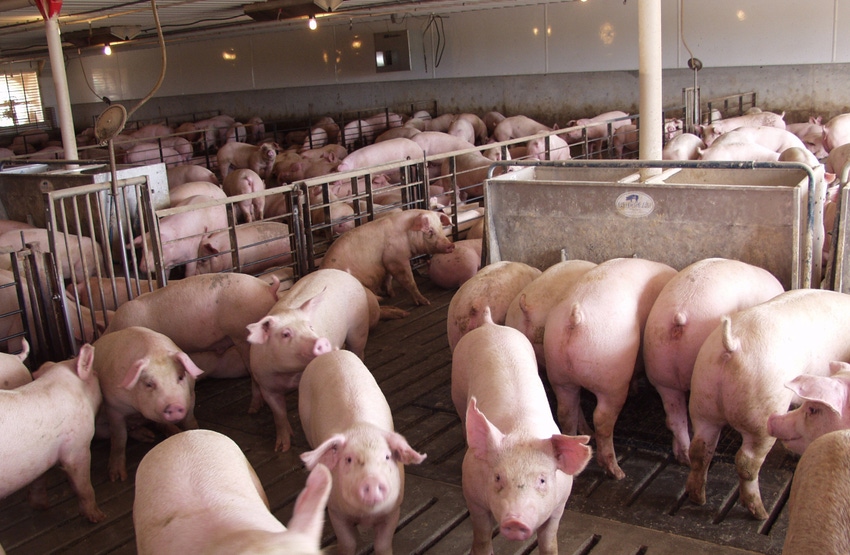Post-reports recap and what it means to you
Volatility anyone? We, as a production community, should not get complacent with these favorable revenue opportunities as the market has proven in just a few short months that the Board giveth and the Board taketh away.
July 10, 2017

Last week, Steve Meyer did a very good job of articulating the high points of the recent Hogs and Pigs report, and this week I will provide some color commentary on the same and share thoughts on the acreage and stocks report along with some topical observations.
First, the somewhat bearish Hogs and Pigs report resulted in a limit-up day on the Friday following the report and the July contract has continued its epic climb, crossing the $92 mark as of this writing.
The hero of the hog complex? Bellies. We surpassed the highest-in-the-history-of-mankind prices last week, eclipsing the previous high set in the porcine epidemic diarrhea year of 2014. This has provided the pork producer a nice windfall in values with the cash market now carrying an unprecedented $10 premium to the CME August contract. All of this in on the heels of the April contract that was beaten to a pulp at expiration. Volatility anyone? I bring up this compare-and-contrast as a gentle reminder that we, as a production community, should not get complacent with these favorable revenue opportunities as the market has proven in just a few short months that the Board giveth and the Board taketh away.
Many market observers have questioned why animal numbers and, specifically, weights have been on the light side of expectations. I do not have an “aha” moment on this one, but I do think we can find some contributing factors that have resulted in our current scenario.
1. Less Paylean use. Our go-to answer for adding weight in the summer has fallen out of vogue with some in the end-user community and a valuable tool to combat heat-related intake fluctuation has been removed from our belt. I get the politics of the debate and do not choose to enter that fray aside from this: If you are marketing to a packer that accepts ractopamine-fed animals, you must take advantage of this opportunity. You have a proverbial club over the balance of the industry. I find it interesting when we benchmark production systems and find that we will scratch the eyeballs out of the soybean meal vendor for a $1 per ton discount yet will step over the easy money. This is easy money.
2. Heat. Per the just released statistics from Al Gore, 2017 was the second hottest June in recorded history. Those high daytime temps did not do us any favors with consumption and I suspect led to an earlier-than-normal plateau of gains across the industry. We are feeling the pinch now and as I write this there is more heat (typical July) on the way.
3. Diet composition. Who could blame you for feeding elevated Distiller’s dried grains with solubles levels when the product saved you $7 per ton on finished feed? The problem was two-fold in my opinion. First, the added dietary fiber did nothing to aid the pig in keeping cool, thus reducing intake, and the reported mycotoxin loads in some areas exacerbated the problem. We had a central Iowa DDGS vendor in our office on Friday that has clean product and he was claiming his truck sales territory was stretching 150 miles with folks driving past four ethanol plants just to get his stuff. Some folks are voting with their feet.
4. Seneca Valley. Reports from the western belt of pigs contracting Seneca Valley may be an ancillary contributing factor to the shortage of hogs thus far this summer. They did not die, they just need time to heal lesions for USDA inspection.
Add up these four factors (you may have more of your own to toss in the mix) and consider how they play on one another and you have a recipe for lower weights across the board. The Hogs and Pigs report did provide you a gentle hint. The pigs are out there. They may not be coming to town as quickly as we thought, but they are not going away.
This brings me to my next point. We all seem to have Sept. 1-ish circled on our calendar for the startup of the new plants in Coldwater, Mich., and Sioux City, Iowa. All indications are that sometime in the first part of September these new facilities will begin operations at a calculated pace. We do not get full capacity right out of the gate … or in the second month of operations … or in the third. It will be after the calendar turns to 2018 before the labor and mechanical issues are sufficiently ironed out to let these plants run full tilt. That is, of course, logical and understandable given the scope of the endeavor, but I am not sure we have internalized the fact with our projections of supply relative to shackle space. Remember my first point about volatility? Could we usher in a new iteration in the fall? Caution seems to be the better part of valor to me.
My take on the grain reports at the end of June is that they were “sneaky.” The USDA told us we have 11% more corn and 11% more soybeans in the bins than at this time last year. We also added nearly 1 million acres to the planted corn acreage number, a value that will be reflected in the July balance sheet on July 12. All of this data took the back seat to the noon maps that day and the weather forecast every day since the report. I suspect this market is getting in front of its skis just a little bit with the hand-wringing over the hot/dry forecasts that seem to come at us with regularity. I do not think the geniuses at Monsanto or DuPont have given us seed corn that can withstand every situation, but I do believe that the improvements made over the last several years have proven themselves (the highest three yields on record have been 2014, 2015 and 2016. Impressive, to the point where we do not have to push the panic button. The pollination window and tolerance is wider than in the past and dry down is much quicker than it used to be.
The Achilles Heel — you can’t add all of the goodies without something being compromised — of the crop is emergence. This makes sense to me. If you have adverse conditions in the spring, you have another shot at replant. You get one look at pollination and season-ending frost. We have cleared the first hurdle — emergence — and I believe we have more gumption in the crop than the general trade wants to believe.
The bean growing characteristics mean that balance sheet implications are too far in the future to make any meaningful prognostication. Beans always look bad in June. This whole Dicamba situation may be more pronounced than I think, but I am reasonably sure that world demand is tepid when China steps away and we have to move product into a stale market. Fund money will give us — you guessed it — volatility until at least August. South American crops were big in beans and the second crop corn is reported as robust.
Bottom line
With the exception of the flood year of 1993, we have never killed the bean crop in the first half of July, and this year is no exception. The corn market has been drug higher by fund money coming into the market, sparked by weather concerns. Our forward profitability curve is favorable right now in my opinion. Perhaps it is a good time to cover some risk and put profits in the bank.
Comments in this column are market commentary and are not to be construed as market advice. Trading is risky and not suitable for all individuals. Joseph Kerns.
About the Author(s)
You May Also Like





